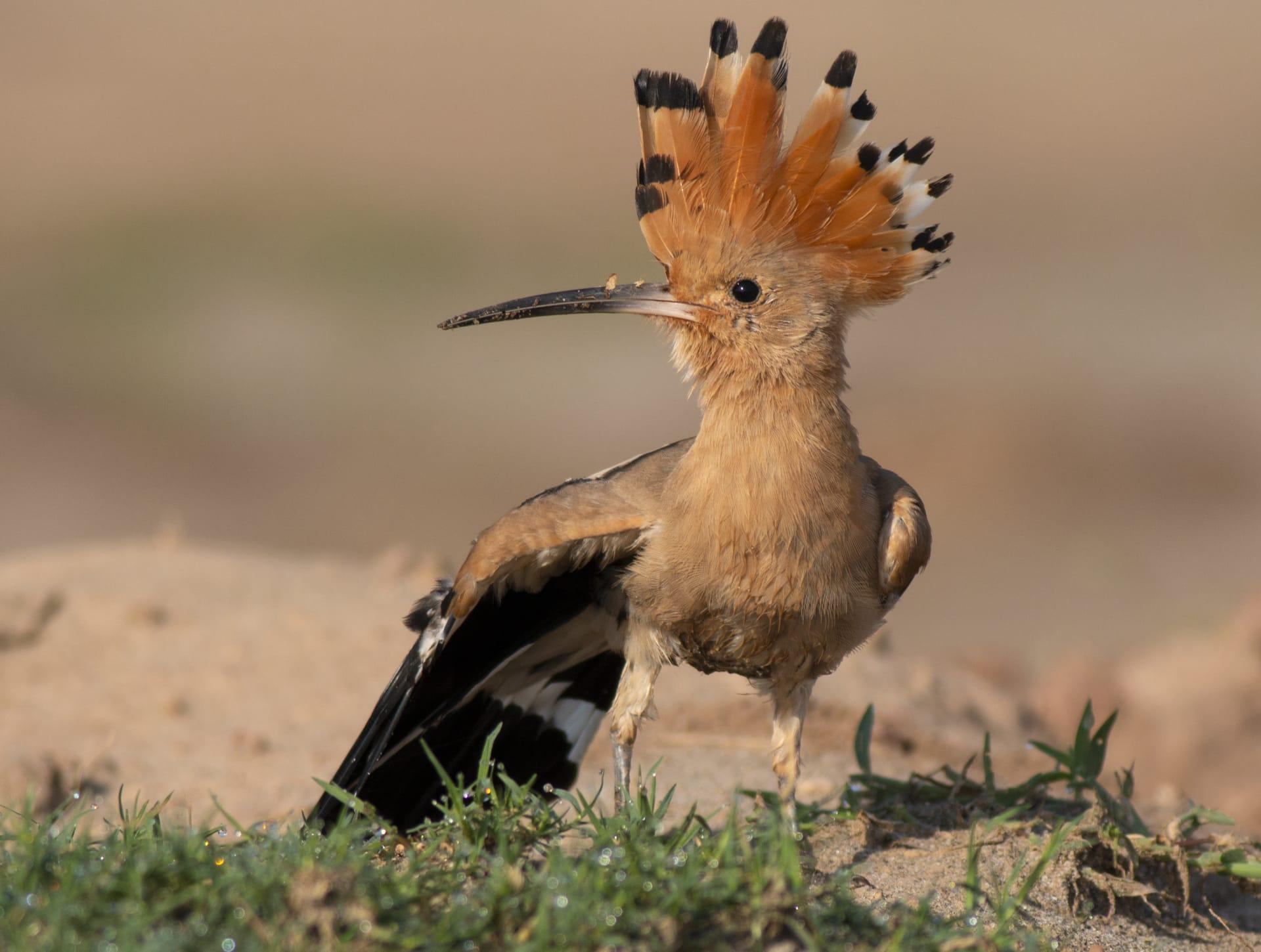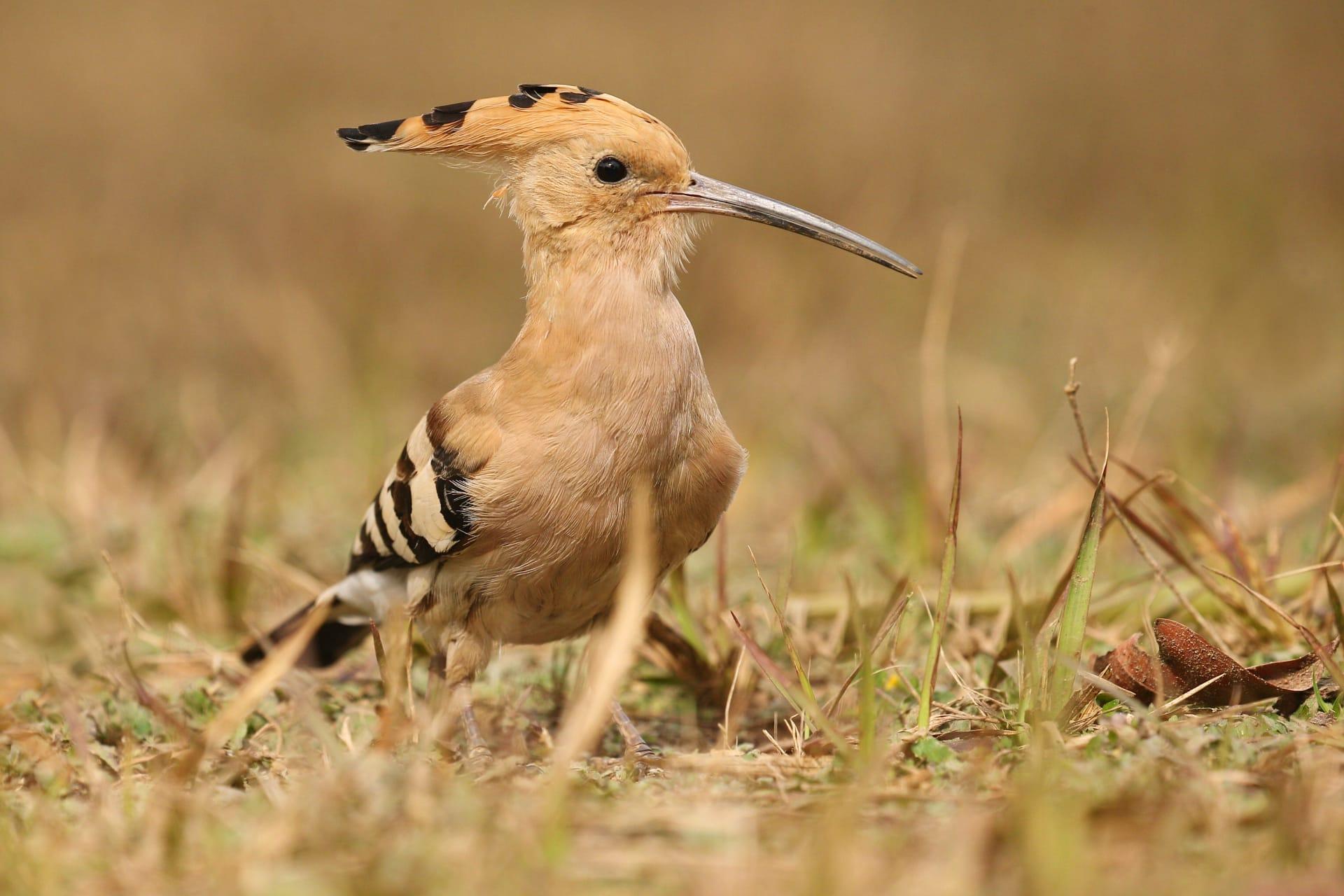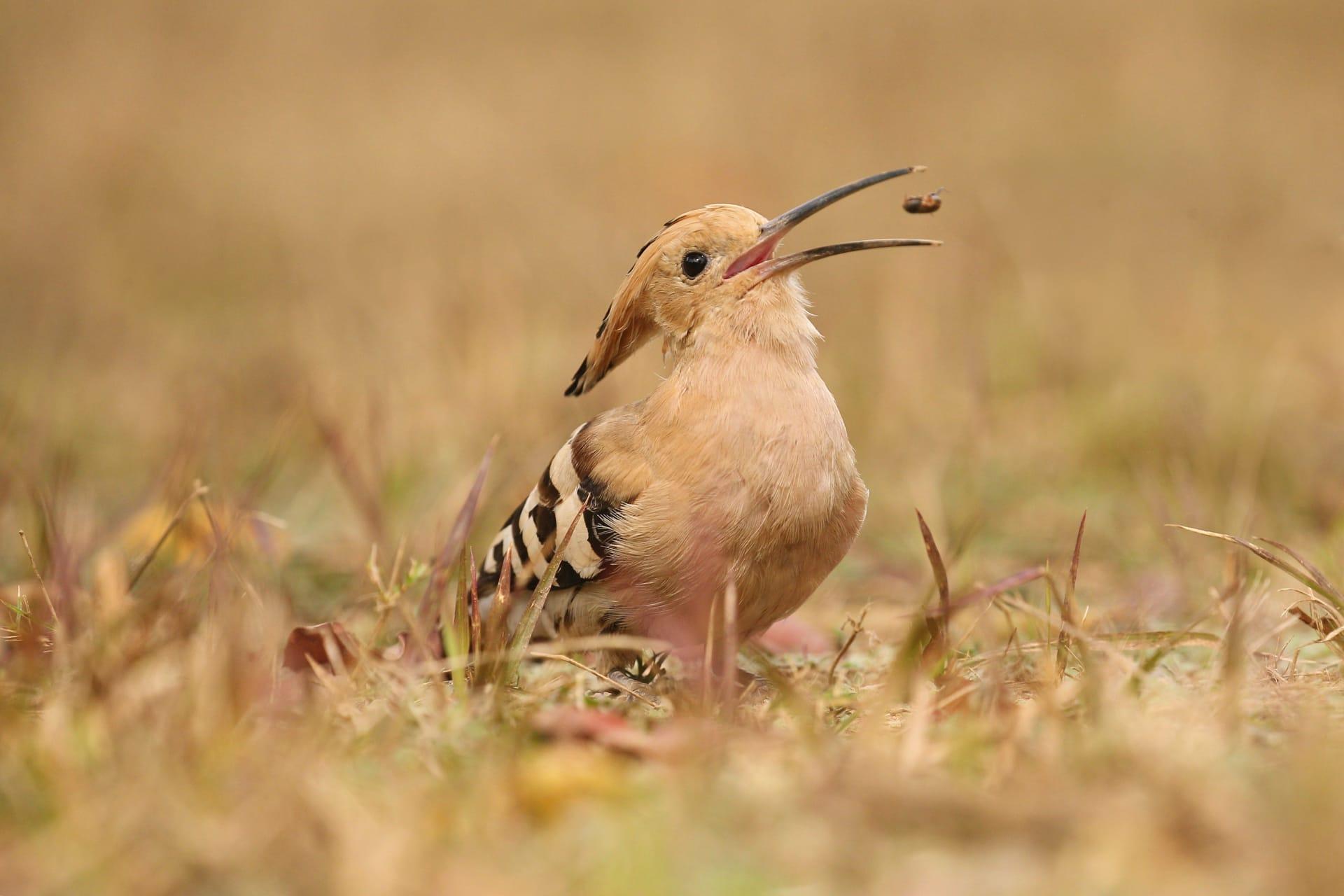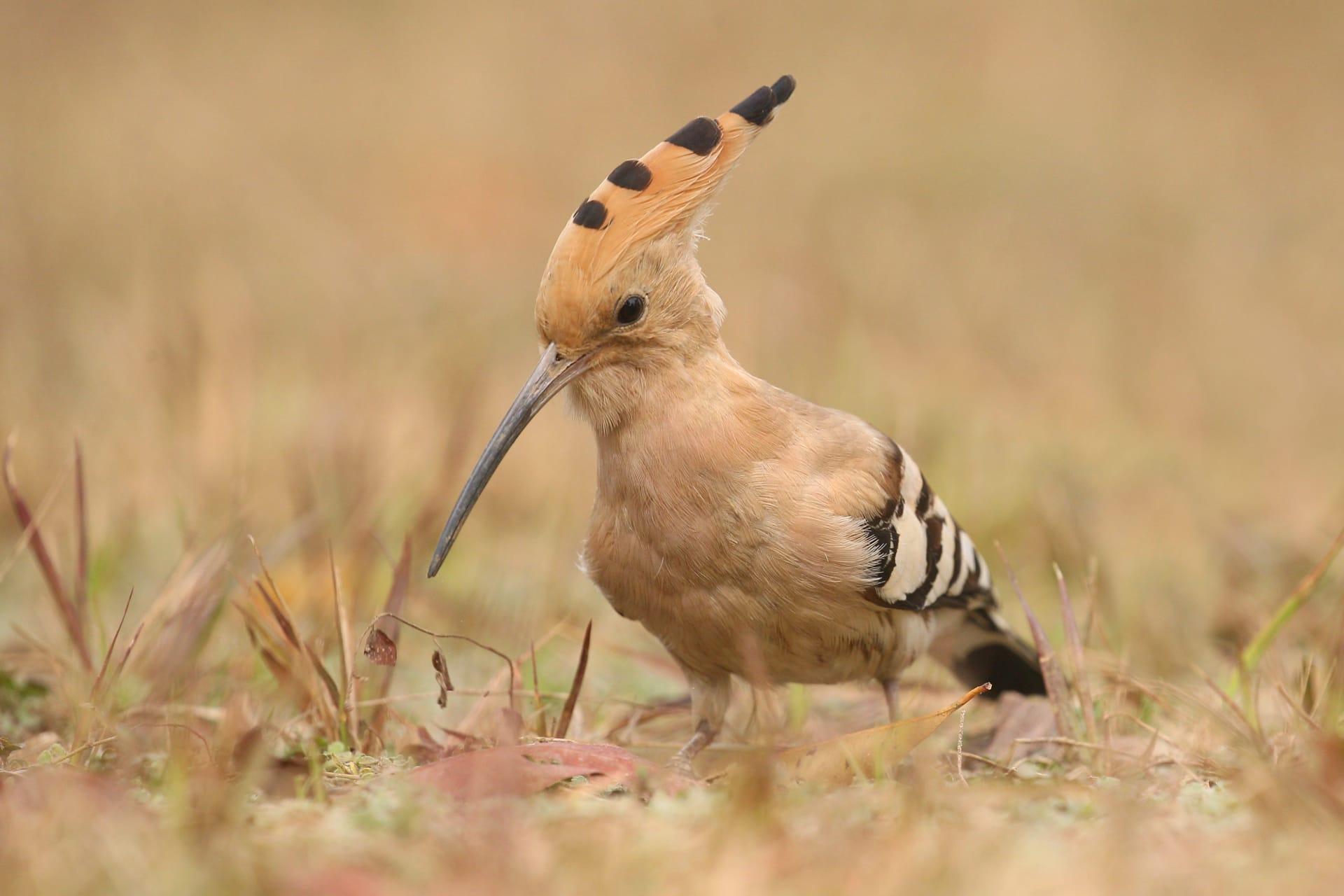Hoopoe Trivia
- Home /
- Trivia Question /
- Animal /
- Hoopoe Trivia
1
Question: What distinguishes the hoopoe's appearance from other birds?
Answer: The hoopoe, a real show-off in the bird world, sports a striking crown of feathers. When excited or displaying, it fans these feathers into a bold, circular crest. This bird is not just about headgear; its plumage is a beautiful mix of black, white, and a warm, rosy-orange, setting it apart in the avian world. The hoopoe's long, slender, black beak, about 2 to 4 inches in length, is perfect for probing the ground for insects, its main food source.
Question: How does the hoopoe's unique beak benefit its feeding habits?
Answer: The hoopoe's beak is a marvel of nature's design. Measuring between 5 to 8 centimeters, this slender, slightly curved tool is ideal for digging into the soil and crevices. It's like a natural pair of tweezers, perfect for plucking out insects, larvae, and small reptiles. This beak is not just for foraging; it's also a defensive weapon. The hoopoe can use its beak to fend off predators and protect its nest, showing that in nature, form often meets function in the most fascinating ways.

2
Question: Is it true that hoopoes are bad omens or bringers of misfortune?
Answer: Contrary to some beliefs, hoopoes are not harbingers of bad luck. This misconception may stem from their unique appearance and solitary nature. In reality, hoopoes are harmless and play a vital role in controlling insect populations. Their presence in folklore and literature often symbolizes wisdom and virtue, quite the opposite of misfortune.
Question: Do hoopoes really use their droppings to defend their nests?
Answer: Yes, it's true, but it's a fascinating survival strategy. Hoopoes, especially the females and chicks, produce a foul-smelling liquid from their oil glands. They use this to coat the nest, deterring predators and parasites. It's a natural defense mechanism, not a sign of uncleanliness. In the wild, staying safe sometimes means getting a bit messy!

3
Question: Can hoopoes change the color of their crest feathers?
Answer: Hoopoes can't change the color of their crest feathers like a chameleon. However, the way they display their crest can affect how the colors are perceived. When the crest is fanned out, the contrast of black and white stripes with the orange backdrop becomes more pronounced, making the crest appear more vibrant. This display is often used in mating rituals and as a warning to predators.
Question: Are hoopoes migratory birds?
Answer: Many hoopoe populations are indeed migratory. These fascinating birds breed in Europe, Asia, and North Africa, then migrate to warmer regions in Africa and Asia for the winter. Their migration journey can be quite lengthy, with some traveling over 1,000 kilometers. This migration is vital for their survival, as it allows them to access food sources that aren't available in their breeding areas during colder months.

4
Question: What is the lifespan of a hoopoe in the wild?
Answer: In the wild, hoopoes can live up to 10 years, though this varies based on environmental factors and predation. They reach sexual maturity at one year of age and start breeding. Their lifespan is also influenced by their ability to adapt to different habitats and evade predators, showcasing their resilience as a species.
Question: How do hoopoes communicate with each other?
Answer: Hoopoes are known for their distinctive "oop-oop-oop" call, which is how they got their name. They use various calls to communicate, including mating calls, alarm calls, and contact calls between parents and chicks. The male's courtship song, a series of loud and clear "hoop-hoop-hoop" sounds, is particularly notable during the breeding season. These vocalizations are crucial for maintaining territories, attracting mates, and ensuring the safety of their young.

5
Question: What role do hoopoes play in their ecosystem?
Answer: Hoopoes are important insectivores in their ecosystems. By feeding on insects and larvae, they help control pest populations, benefiting agriculture and natural plant life. Their foraging behavior also aids in soil aeration and nutrient cycling, making them valuable contributors to their habitats' health and balance.
Question: Do hoopoes form flocks or are they solitary?
Answer: Hoopoes are primarily solitary birds, especially outside the breeding season. They are territorial and often seen alone or in pairs. During breeding, a male and female pair will work together to raise their young. However, they don't form large flocks like some other bird species. This solitary nature is part of their survival strategy, helping them to efficiently forage for food and evade predators in their respective territories.